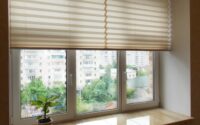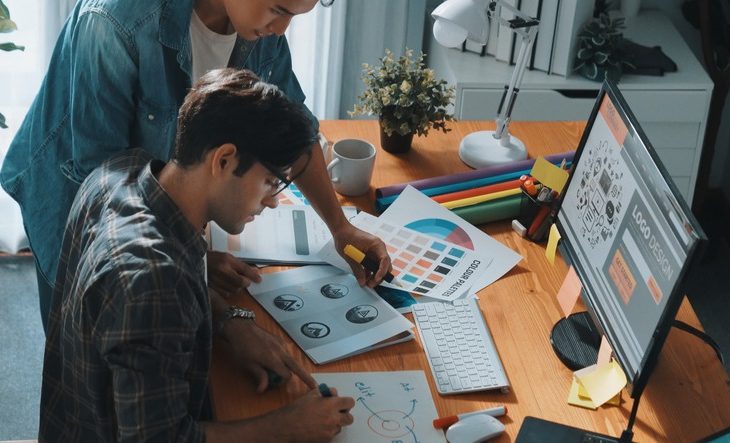Having a clear image in mind before starting a project significantly contributes to its success. Creating something attractive and practical depends largely on how well the plans and concepts are visualized beforehand. Various methods and techniques can simplify this visualization process to help achieve a well-designed final product.
Best Ways to Visualize Your Design Ideas
Use Sketching and Drawing
Sketching is a methodical and simple approach to presenting design concepts visually to yourself or others. Drawing gives the ideas in your head some physical structure, allowing you to see what works and what does not. Whether your drawing expertise is beginner or advanced, putting pencil to paper can significantly boost the vision behind your designs.
In sketching, you do not need high-level artistic skills. Simple, easy-to-understand diagrams, rough sketches, or basic outlines can visually organize complex ideas neatly for consideration.
Design Software and Applications
Today, many software platforms are easy to use, even without experience, to help visualize ideas. Software helps create virtual representations, making it possible to see exactly how finishes, colors, and structure choices work together. This method is efficient, especially when determining the aesthetic appeal of your design.
3D visualization software provides an accurate, clear picture of the final product. This capability is particularly beneficial for interior designers, who rely on detailed previews to refine their concepts. Popular software systems available online include both free versions and more sophisticated paid software platforms.
Building Physical Models or Prototypes
Creating a physical model lets you test design concepts practically and visually. Model-building can include common items such as cardboard, paper, clay, or wood to create simple and low-key designs. It enables visual assessment from multiple angles, making it easier to identify necessary improvements.
If designs are more technical or related to mechanics, prototypes become necessary. A prototype serves the dual purposes of validating functionality and analyzing visual appearance.
Utilizing Mood Boards and Inspiration Boards
Mood boards are visual collections that help express the overall style, colors, and feelings you want your design to convey. Curating images, textures, fabric samples, paint swatches, and other inspiring materials together create a solid visual representation. Boards are particularly popular in creative fields like fashion design, interior decoration, and graphic artwork.
For clearer vision and quicker inspiration, you can also make use of digital inspiration boards with online platforms, which allow for flexibility. Digital boards can be quickly adjusted and modified, streamlining the process considerably.
Collaborating With Experts
Getting professional assistance significantly simplifies visualization. Working with experienced professionals allows you to leverage their expertise, bringing about clear and thoughtful design concepts. Professionals help translate abstract ideas into clear, viable visions.
Their specialized knowledge can be particularly beneficial during the ideation phase. You gain valuable perspectives, practical advice, and suggestions when involving experts. Interior designers Glendale, for example, often have tools, experience, and skills that streamline and simplify the visualization effort, leading directly to all-around project improvement.
Seeking Feedback From Friends and Family
Share your designs or ideas with friends and family to see how others interpret your concepts. Asking someone else often helps shed insight and discover visual strengths or issues simply. It allows quick feedback without the added cost of hiring experts.
Feedback gathered can guarantee higher satisfaction with your design outcomes. Honest voices from those who know you personally are beneficial and typically reliable.
The Role of Technology in Visualization
Technology like virtual reality (VR) has made visualizing design ideas increasingly accessible and sophisticated. VR immersion provides real-life visualization to make sense of a project without actual physical construction. This technology saves time, simplifies modifications, and significantly reduces mistakes.
Moreover, integrating augmented reality (AR) for simple smartphone or tablet viewing presents interactive environments that replicate how they may appear in reality. AR/VR allows people to move items around virtually, experiencing the layout before actually starting a physical project.
Improving Your Visualization Skills
Regular Practice
The visualizing capability develops consistently through regular practice. Begin drawing or sketching ideas daily to train your brain to translate mental images into visual representations quickly. Routine practice refines your instinctive recognition of good structure or aesthetics.
This is especially true for interior designers in Eagle Rock, who benefit from consistently experimenting with design ideas. It generates an increased capacity to produce simple yet effective visual representations, which is essential for creating beautiful, functional spaces.
Taking an Online Visualization Course
Learning from an online course tailored specifically for designers can significantly enhance visualization potential. Courses available online offer helpful tutorials, guidelines, and techniques emphasizing visual aspects of design. Signing up for lessons enhances ability remarkably, making you a stronger, more visually confident designer.
Reputable online courses offer flexibility and convenience, enabling learning at your own pace. Such structured training supports skill growth, confidence, and visual perceptiveness over the long term.
Closing Remarks
Clear visualization makes achieving successful design outcomes easier, practical, and more efficient. Various methods like sketching, using software and technology, working alongside experts, and developing your skills are helpful in bringing clarity visually to projects. Consistently practicing and remaining open to expert insights and technological assistance provide powerful strategies for ensuring project satisfaction. Embracing these visualization tips ensures clear, practical, aesthetically pleasing results for perfect finishes that transform your vision into reality.








